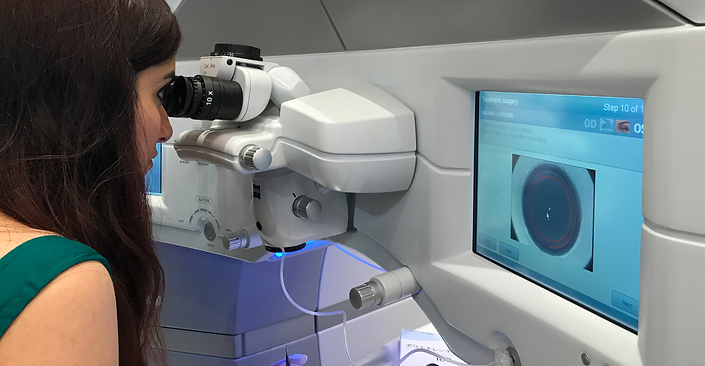
Refractive Surgery/Laser Lasik Surgery in Gurgaon
The variables that work perfectly together to give you normal vision without requiring glasses or contact lenses are:
-
The curvature of the cornea (surface).
-
The shape of the lens.
-
The length of the eyeballs.
Common Referective Errors
-
Myopia(near-sighted): This means that either of the two may apply: the surface of the cornea may be overly curved or the length of the eyeball maybe too much.
-
Hyperopia (far-sighted): This means that either the surface of your cornea is not curved enough or the eyeball is too short.
-
Astigmatism: This means that the surface of your cornea is non-spherical thus it does not focus objects equally on the retina.

LASIK
LASIK is the acronym which stands for Laser Assisted in-situ Keratomileusis. It is also referred to as Laser Intrastromal Keratomileusis. It has become the most preferred procedure for the treatment of myopia, hyperopia and astigmatism. The results are dramatic and the visual is rapid which is why patients embracing this procedure the world over. Improved vision without corrective glasses is attained immediately after the procedure and visual stability takes place within a few weeks in most of the cases. ADEH provide laser lasik surgery in gurgaon sector 55 - 56, golf course road at affordable cost.
PRK/LASEK/Epi LASIK
PRK (photorefractive keratectomy), LASEK (laser epithelial keratomileusis), and epi-LASIK (epithelial laser in-situ keratomileusis) use excimer laser to reshape the cornea thereby, these surgeries allow light to focus on the retina and correct a person's vision.
In these procedures, the top layer on the surface of the cornea (epithelium) is removed. Then excimer laser removes tissue from the cornea very accurately, reshaping it, without damaging nearby tissues.
Custom LASIK
(MICROKERATOME)
LASIK (laser-assisted in situ keratomileusis) is the most commonly performed refractive procedure / laser eye surgery to treat myopia (nearsightedness), hyperopia (farsightedness) and astigmatism (refractive errors).
Like other types of laser surgery, LASIK reshapes the front surface (cornea) of the eye via excimer laser to enable light entering the eye to focus on the retina without glasses or contact lenses.
Femto LASIK(BLADELESS)
In bladeless LASIK — also called blade-free LASIK, all-laser LASIK, or femto LASIK — yoursurgeon uses two different types of lasers for the vision correction procedure.
First, an ultra-fast femtosecond laser (Femto) is used to create a thin flap in the cornea. Next, an excimer laser is used to reshape the underlying corneal tissue thereby, correct your vision. The flap is then returned to its original position and natural healing takes place.
Phakic IOL/ICL
PHAKIC IOL or ICL (implantable collamer lens) are surgically placed clear implantable lenses placed above the natural lens (without taking your natural lens out) to produce clear vision.
They function like permanent contact lens and are a successful and effective alternative to LASER surgical procedures like LASIK. In certain cases like severe myopia these maybe a better option than laser procedures.

WHAT OUR PATIENTS SAY
WRITE TO US








